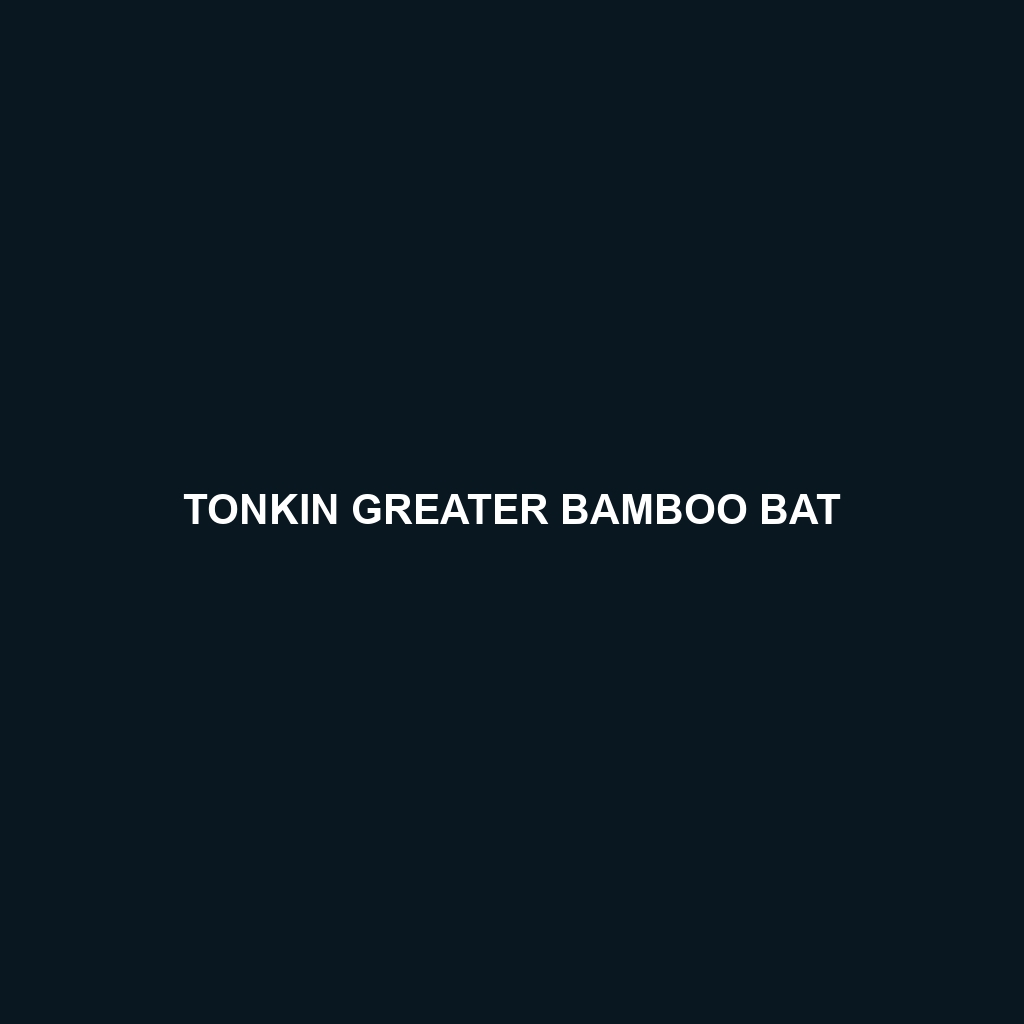Tonkin Greater Bamboo Bat: Species Description
Common Name: Tonkin Greater Bamboo Bat
Scientific Name: Murina tonkinensis
Habitat
The Tonkin Greater Bamboo Bat is primarily found in the forests of Northern Vietnam and Southern China. This species flourishes in bamboo thickets and subtropical moist montane forests, making its habitat unique and specialized, where dense vegetation provides ample roosting and foraging opportunities.
Physical Characteristics
This bat species exhibits a small to medium size, with an average wingspan of approximately 27 to 30 cm (10.6 to 11.8 inches). The fur is generally dark brown to reddish-brown, with distinctive lighter-colored fur on the face and belly. Its unique ear shape and relatively broad wings differentiate it from other bat species, further contributing to its identification in the wild.
Behavior
The Tonkin Greater Bamboo Bat is predominantly nocturnal, emerging from its roosts shortly after sunset to hunt for food. It is known for its agile flight patterns and echolocation capabilities, which it uses to navigate through its dense bamboo habitat. This bat species may also display social behavior, often roosting in small colonies.
Diet
This species primarily feeds on small insects, particularly moths and beetles. The Tonkin Greater Bamboo Bat is an important insectivore, playing a crucial role in controlling insect populations. Its feeding habits are characterized by typical foraging behaviors, where it catches prey in flight using its echolocation skills.
Reproduction
The breeding season for the Tonkin Greater Bamboo Bat typically occurs during the warmer months of the year, with females giving birth to one or two pups after a gestation period of about 45-50 days. Parental care is evident, as mothers nurse their young until they are capable of foraging independently, usually within a few weeks of birth.
Conservation Status
The Tonkin Greater Bamboo Bat is currently classified as endangered by the International Union for Conservation of Nature (IUCN). Habitat loss due to deforestation and agricultural expansion poses significant threats to its survival, prompting conservation measures to protect its natural environment.
Interesting Facts
One fascinating aspect of the Tonkin Greater Bamboo Bat is its unique adaptation to living in bamboo groves. Unlike many bats that roost in caves or trees, this species primarily utilizes bamboo cavities, which provide both shelter and a plentiful food source. Additionally, the ability of these bats to echolocate enables them to thrive in their cluttered forest habitat.
Role in Ecosystem
The Tonkin Greater Bamboo Bat plays a vital role in its ecosystem as an insectivore. By consuming vast amounts of insects, it helps maintain the ecological balance and supports plant health through the reduction of pest populations. Moreover, its presence in the bamboo forest indicates the health of the biodiversity within its habitat.
